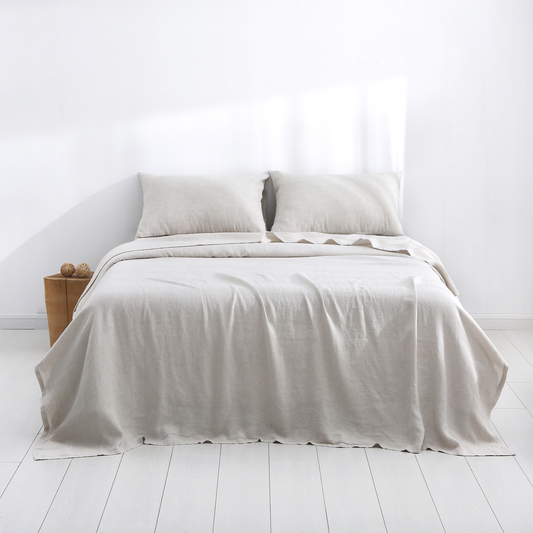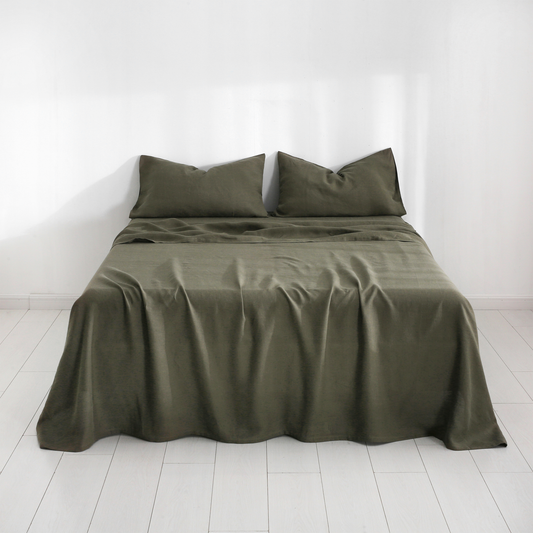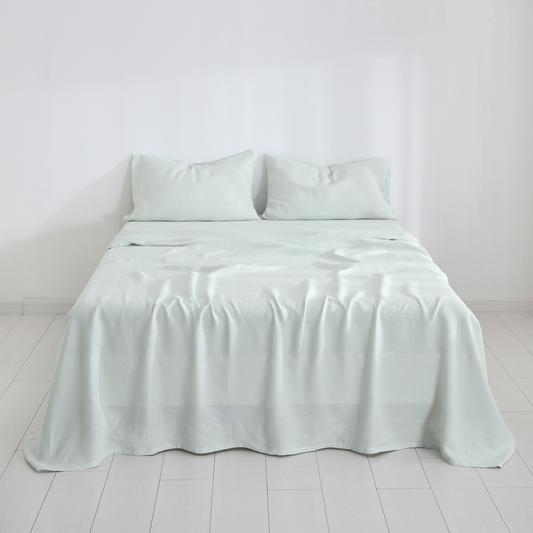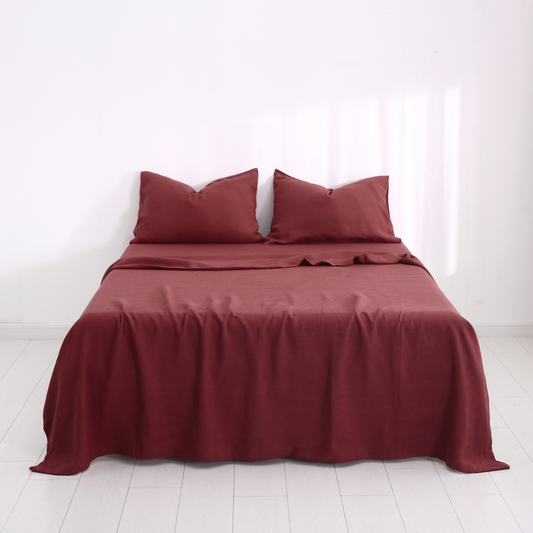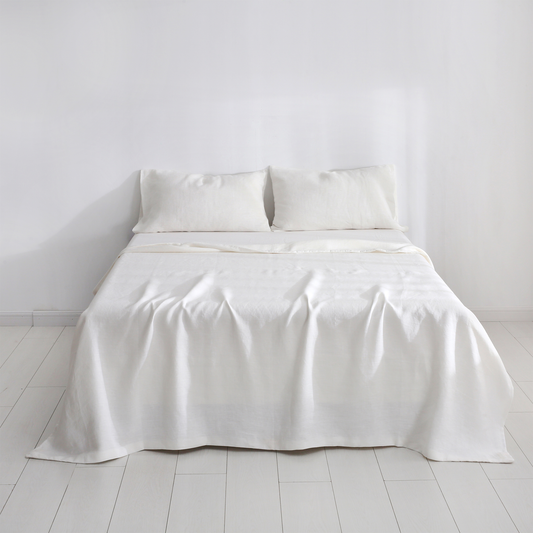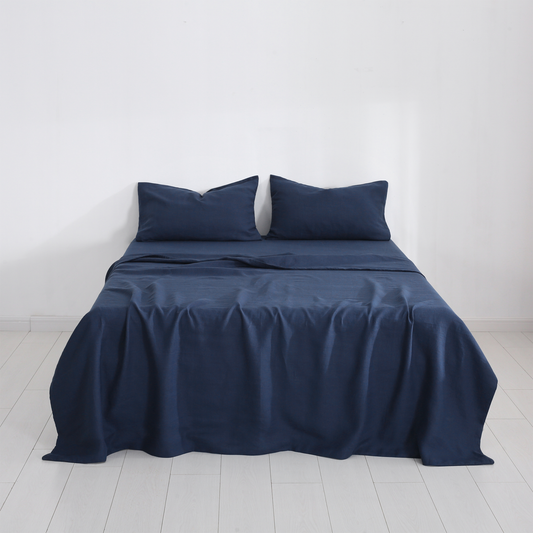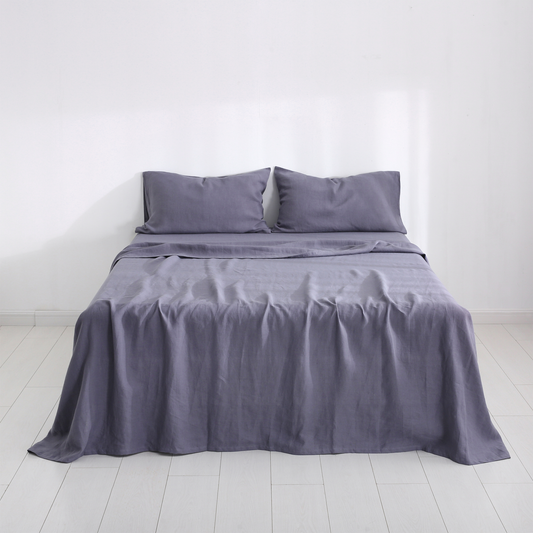The destruction of natural environments caused by unsustainable farming & industrial practices have resulted in a climate and ecological crisis, with one widespread problem affecting us all severely - the deterioration of our waterways.
By Bailey Pyman
A significant contributor to polluted waterways is the fabric and textile industry, with the two most popular and mass-produced fabrics, cotton and polyester, wreaking vast amounts of harm to the world's waterways.

This pollution flows onto forests, farmlands and communities. Cotton production alone is responsible for 16% of the world's pesticide use(1).
A study of rainwater in a Brazilian cotton region found that rainwater contained 19 different pesticides - 12 alone in cotton production.(2)

Now, more than ever, many of us realise change starts at home. We must look at our living habits, purchases, and decisions to ensure our planet's environment is safeguarded.
This problem has seen a large amount of recent discussion on sustainable fabrics focus on the hemp plant.
More and more evidence suggests that this often misunderstood and still very underrated and under-used plant, and the natural fibre and textile that can be derived from it, provides a key and essential solution to a massive part of the environmental problem.
This article will explore how hemp really could be the hero of our lifetime, from its incredible environmental benefits to its viability as a genuine alternative to cotton and polyester.
After all, why haven't we made more things out of hemp up to this point in time? We will explore hemp's history as a textile and the political stigma that was unjustly attached to it over the last several decades.

How sustainable is hemp?
But first thing's first. How can hemp help the environment?
We stand to gain enormous environmental benefits by using it as an alternative to cotton and polyester.
Firstly, hemp is a natural fibre, meaning it grows normally and independently in the ground, like a weed. Don't worry, you won't want to be getting the weed-killer out for this one.
It requires little to no pesticides, herbicides, fungicides, or any other nasty and polluting chemicals to grow healthily, as it is naturally resistant to pests.
Compared to cotton and other fibres, which do use these chemicals, it is far better for our waterways. Even other natural fibres, such as linen (made from the flax crop), use pesticides and chemicals in their production process.
The lack of harmful pesticides and chemicals means no runoff into waterways and soils, significantly reducing the harm and pollution done to the environment by the textile industry. Polluted waterways harm animals, forests, and people alike, while soil degradation ruins fertile farmland and makes it impossible to grow anything there.

Furthermore, hemp is exceptional at absorbing carbon dioxide and reducing carbon offset that usually goes into the atmosphere. Like a tree! Hemp absorbs more carbon from the atmosphere than what is emitted during the process of harvesting, processing and transporting it, making it a 'carbon negative' textile.
It even puts nutrients back into the soil. Cotton and other fabrics pollute soil and environments, whereas hemp literally enriches them. This reinvestment of nutrients into soil is unparalleled by other natural fibres.

Not only this, there are a myriad of other benefits that make hemp the more sustainable and environmentally friendly natural fibre. It can be grown in practically every environment as it is an incredibly durable plant.
This means it can be grown locally across the world, creating less need to import and export it far distances, further reducing its overall carbon output.
It also uses both land and water far more efficiently than other crops. It has a higher yield than cotton or linen, meaning more hemp is produced from the same area of land. It also requires far less water, minimising the effects of droughts on communities and stressed river systems.
The environmental benefits of hemp are enormous and go a considerable way to offset the negative, wasteful and harmful effects of prevalent textiles such as cotton and polyester.
By switching the majority of our textile and fabric production to hemp, we will be minimising the devastating damage the cotton and polyester industries are doing to the environment. Instead, we will actually be improving the health and wellbeing of our waterways, forests, and our people.

Is hemp overrated?
So, is hemp the miracle crop some claim it to be?
We've already gone through many of the incredible benefits hemp offers the environment, but how does it stack up as a functional textile?
Firstly, it's important to note that hemp has been out of mainstream production and use for decades (more on that later), which means that technology and methods for optimising cotton, polyester and other fabric production has had a huge head start.
Even so, despite being a relatively new textile in modern times (although hemp has been used for thousands of years - again, more on that later), hemp offers an incredible range of benefits that outshine its competition as a textile.

To start, hemp is incredibly durable due to its long fibre bundles. It's tough, making it difficult to tear, yet it feels softer the more you wash it, making it excellent for clothing and bedding.
It is up to 8 times stronger than linen, and has the longest shelf-life of any natural fabrics. That means less damaging and replacing, reducing our overall environmental demand and personal monetary spend.
It is resistant to UV light, meaning it won't fade nearly as much as other textiles in the sunlight, and is superior in its breathability. It even has antimicrobial properties, making it a cleaner and more hygienic fabric option.

When it comes to bedding, people often consider higher thread counts to be of better quality. Realising this, manufacturers experimented with ways to achieve high-thread counts on their sheets without actually improving bedding quality.
However, production and fibre strength are the most essential components of quality bedding, where hemp outshines its competitors. So with that said, it doesn’t use the typical thread count measurements.
Hemp is tougher, better, softer, stronger. It's like a Daft Punk song.
Compared to usual cotton, polyester, and blended bedding sets, hemp sheets will feel like a heavenly snuggle. For instance, Polyester sheets can contain carcinogens, cause respiratory issues, skin problems, and have poor body temperature regulation. Not a lovely fabric to sleep in each night in comparison!
Furthermore, in the transition from a high-carbon to low-carbon economy, hemp can play a pivotal role in addressing some of our most pressing issues, such as pollution, carbon emissions, plastics waste, world hunger, health, employment and rural underdevelopment. The fibres of hemp can even be used to create other sustainable materials, from biodegradable plastics to building materials.
Overrated? Not even close. As we explore below, hemp has been nothing short of underrated for the best part of a century. The world has so much to gain from switching to this incredible plant. By changing our purchasing habits, we can create demand and let manufacturers know that this is what they should be producing. Pretty soon after, we'll start to reap the benefits of hemp and enjoy a greener, cleaner, comfier future.

Why isn't hemp more widely used?
Once the environmental and functional benefits of the hemp fabric are made clear, many people then ask "Well, why don't we make more things out of hemp?"
The answer to this is loaded, complicated, and contested, depending on who you ask. For appropriate context, it's important to know how the hemp fabric has been used throughout history.
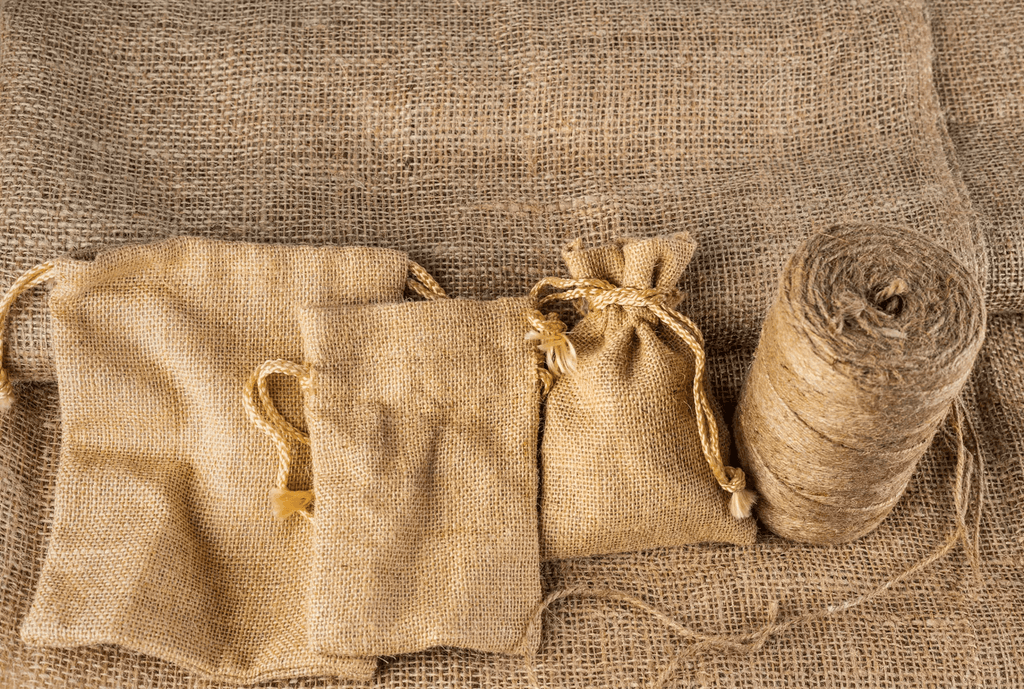
Firstly, hemp products have been used for centuries. Historically, its early uses came in the form of industrial fibre, with its exceptional durability and strength being useful for shipping ropes, sacks, sailcloth, paper, and many other hemp products.
Its wide and varied uses meant that in the 16th century,, it was a fineable offence within the British Empire for farmers to not be growing hemp, and the American Declaration of Independence was even written on hemp paper.
So in short, hemp has been widely used throughout history in a plethora of ways. So how come it stopped?
Why was hemp stigmatised?
Many people ask 'Is hemp the same as marijuana?'. The answer to this is simply no, although the plants are part of the same family.

The hemp plant used for fabric comes from Cannabis Sativa, which is completely different to the marijuana plant. The hemp fabric is created from the outer fibres of the stalk of the hemp plant.
Hemp plants contain very low levels of THC (about 0.3%), which is the psychoactive component of marijuana (aka weed) that gets people high and alters their state of consciousness. For this reason, it is mostly only cultivated for industrial purposes such as food, shelter, clothing, and bedding.
In the 1800s, the cannabis plant was grown all over the United States and other parts of the world due to its plethora of uses, and was a widely valued crop even up until the mid 1900s. Henry Ford even developed a car that ran on hemp fuel.
The widespread stigmatisation of marijuana and the 'War on Drugs' began even before Nixon in the 1970s, when Cannabis was marked as a Schedule 1 Drug and was outlawed in most countries throughout the world.
The stigmatisation was prevalent throughout the 20th century by vested interests, many theories abound as to what caused such widespread stigmatisation. One is William Randolph Hearst and his newspaper in the 1930's, who allegedly had competing wood pulp interests(3). Another was the implementation of the Marihuana Tax Act of 1937 with lobbying from investors in the nylon industry.
This resulted in people ignoring the multiple benefits of the plant by insisting that it was dangerous.
The cannabis plant was turned into a scapegoat for many domestic, social, and economic issues in western culture and was prohibited.

One may notice, however, that after decades of prohibition, these same domestic issues persist and are often even worse. Perhaps criminalising cannabis was not the solution after all?
Regardless, the hemp plant went from a widely used and highly useful part of the world economy to an illegal and stigmatised scapegoat.
Recent times have found the so-called 'war on drugs' to be ineffective and missing the mark in many areas, including its treatment of the hemp plant. Many countries now grow the plant for industrial purposes yet again, and the benefits to the public are once again slowly being seen.
Is hemp legal?
The hemp fabric, alongside other products of the plant such as CBD oil, are fast becoming legal in more and more countries around the globe. It is authorised in EU, US, UK and Australian law for industrial purposes due to its extremely low THC content.
You won't get stoned from wearing a hemp t-shirt. It is produced and manufactured in many parts of the globe, including Asia, where it provides income for local farmers and communities while significantly improving the health of the natural environment surrounding it.

Is hemp fabric soft?
So with all that said and done, what can hemp fabric do for you? Is it worth buying?
100% yes!
Manufacture and sale of hemp is fast becoming widespread across the world again, not purely just for its environmental and social benefits, but also for its quality.
The durability and toughness of the fibre mean it lasts much longer than other natural fibres, yet it also remains incredibly soft to the touch, and gets softer with each and every wash.
It is the best natural fibre for bedding for this reason, with its antimicrobial and thermodynamic properties ensuring a hygienic and comfortable sleeping environment.

Many bed sets, sheets, and pillowcases are being made from hemp due to its softness, cleanliness and breathability, as well as the booming hemp clothing industry. Soft and smooth, it also lasts for years, meaning less need to replace and waste.
Once widely used across the globe for centuries, then briefly and unjustly stigmatised, hemp is now back in the game and is ready to save the world.
By voting with your wallet, you can send a clear message to governments and corporations that the future is hemp. The planet and your bed will thank you.
By buying hemp, you are helping it become the hero of our lifetime. And we need it now more than ever.
References:
https://wrigglytoes.com.au/blog/cotton-pesticides/cotton-pesticide-statistics-you-need-to-hear
https://www.theworldcounts.com/challenges/consumption/clothing/cotton-farming-water-consumption/story
https://elaineou.com/2014/06/25/removing-the-cannabis-stigma/


